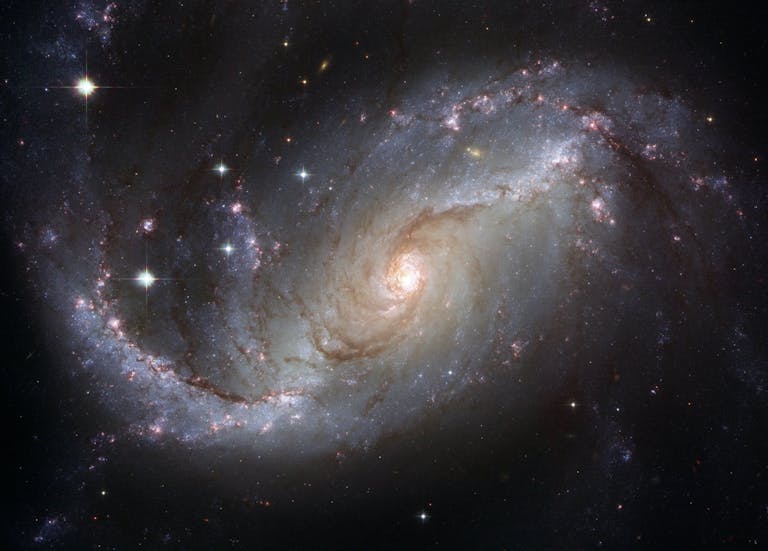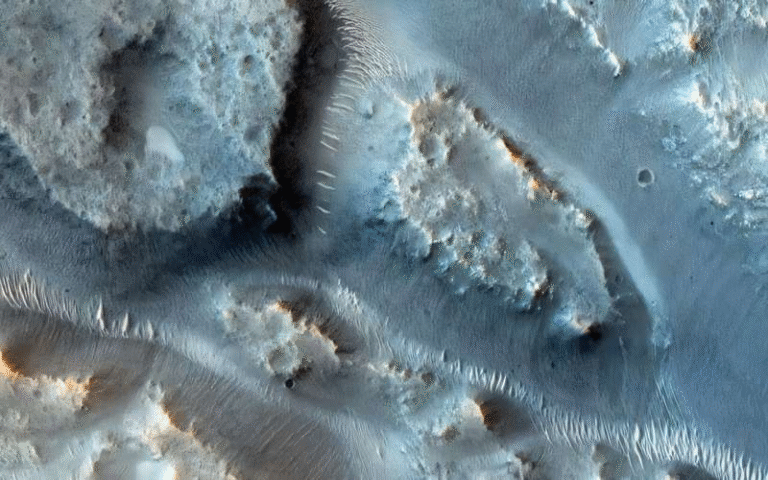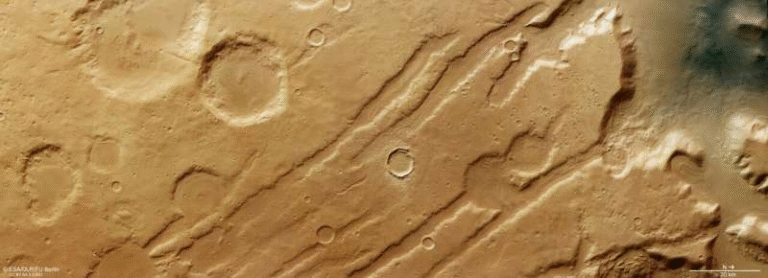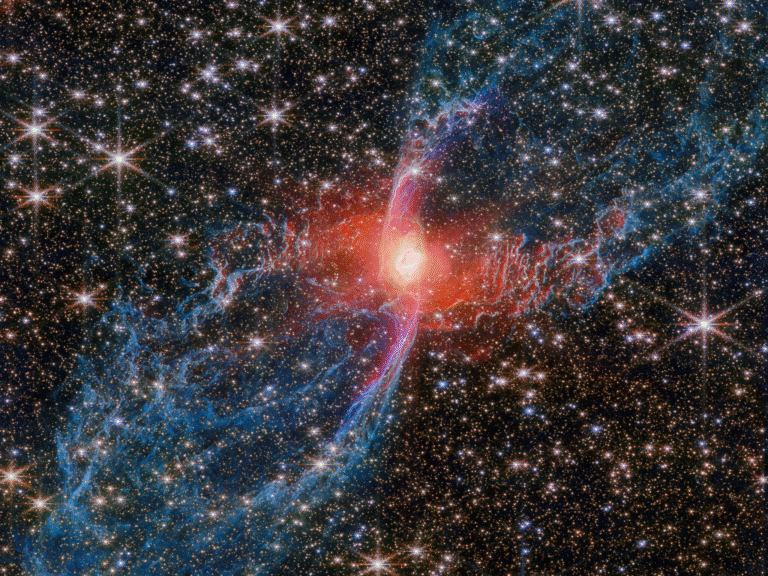Astronomers Spot a Mysterious New World at the Edge of Our Solar System
Astronomers have made a discovery that feels straight out of science fiction—a new distant world lurking far beyond Neptune. Officially labeled 2017 OF201, this icy body has an orbit so vast and unusual that it could reshape how we understand the very outskirts of our solar system.
A Possible New Dwarf Planet
2017 OF201 isn’t just any space rock. With an estimated size of about 700 kilometers across, it’s large enough to potentially earn the title of dwarf planet, placing it in the same league as Pluto. This makes it one of the biggest objects ever detected in such a remote orbit.
For comparison, Pluto is more than three times larger, but what makes 2017 OF201 so fascinating is not only its size but also its path around the Sun. This tiny world takes roughly 25,000 years to complete a single orbit—a journey that stretches from a distance similar to Pluto’s to a mind-bending 1,600 times farther from the Sun than Earth.
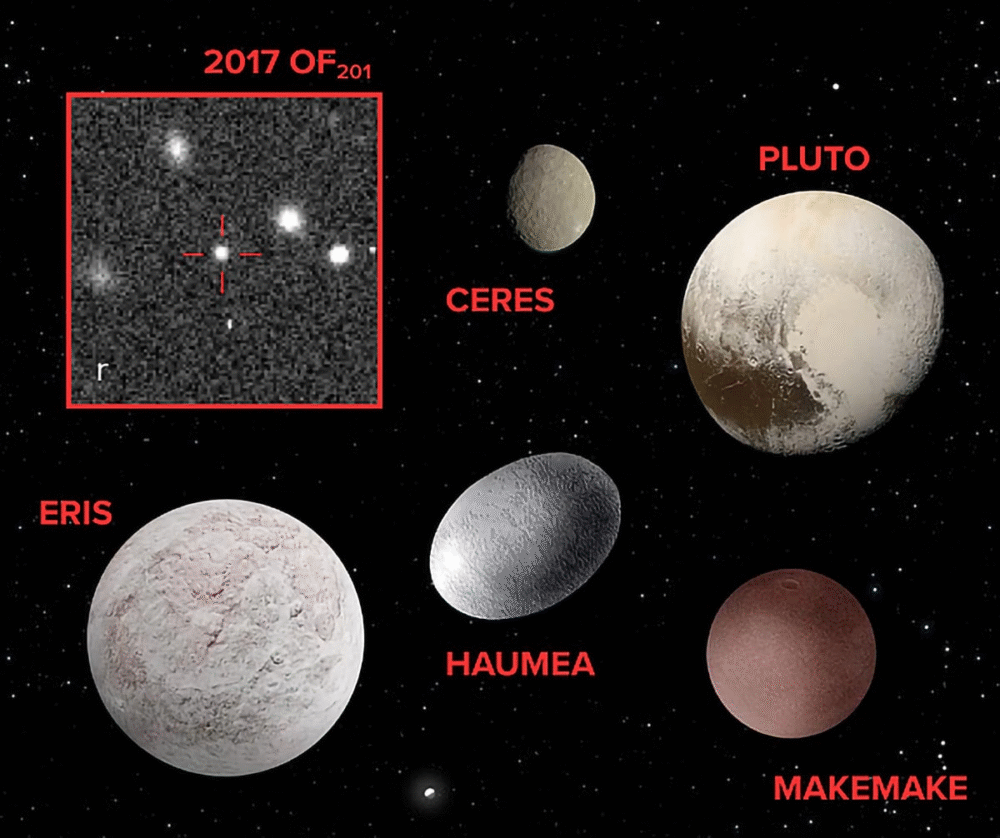
A Journey Written in Gravity
The orbit of 2017 OF201 isn’t just long, it’s weird. Astronomers believe it was likely tossed around by the gravitational pull of one or more giant planets. Some even suggest it may have been pushed all the way out to the Oort Cloud—the solar system’s icy, distant shell of comets—before drifting back inward.
Such a dramatic history hints at a complicated past of cosmic encounters, where planets acted like pinball bumpers, flinging this object across unimaginable distances. Its unusual orbit could hold clues to the ancient forces that shaped the outer solar system.

A Challenge to Planet Nine?
For years, scientists have noticed that many distant objects beyond Neptune seem to cluster in strange orbital patterns. Some think this clustering is the result of a hidden giant—an undiscovered Planet Nine—pulling them into place with its gravity.
But here’s the twist: 2017 OF201 doesn’t follow the pattern. Instead, it seems to be an outlier, refusing to conform to the expected rules. This could mean that Planet Nine’s influence is weaker than thought—or that perhaps it doesn’t exist at all. Either way, this new object complicates the mystery in the best possible way.
Found in the Data
Unlike some discoveries that require massive, exclusive telescope time, this one was uncovered using archival data—images that were already sitting in databases from telescopes like the Victor M. Blanco Telescope and the Canada-France-Hawaii Telescope.
By creating a clever algorithm, the research team sifted through seven years of observations, eventually spotting 2017 OF201 in 19 different images. That’s an exciting reminder of the power of open science: even students or citizen scientists with the right tools could, in theory, make discoveries of this magnitude.
A Crowded Frontier?
Perhaps the most exciting implication is what this discovery suggests about the population of distant worlds. Since 2017 OF201 is only visible for about 1% of its orbit, astronomers think there could be hundreds more like it—hiding too far away for us to see right now.
This paints a new picture of the solar system’s edge: not an empty stretch of cold space, but a region full of hidden worlds, waiting to be found. With more powerful telescopes and advanced algorithms on the horizon, we may just be scratching the surface of what’s out there.
Why This Matters
Discoveries like 2017 OF201 remind us that even in our own cosmic backyard, there’s still so much left to learn. We’ve sent spacecraft across billions of miles and peered deep into the universe, yet the outer solar system continues to surprise us with mysteries and marvels.
This new world isn’t just another icy rock—it’s a symbol of curiosity, persistence, and the thrilling unknown. If one unusual dwarf planet candidate can raise so many questions, imagine what the next discovery might reveal.
Source: “Discovery of a dwarf planet candidate in an extremely wide orbit: 2017 OF201” by Sihao Cheng, Jiaxuan Li and Eritas Yang, 21 May 2025, arXiv.
DOI: 10.48550/arXiv.2505.15806
